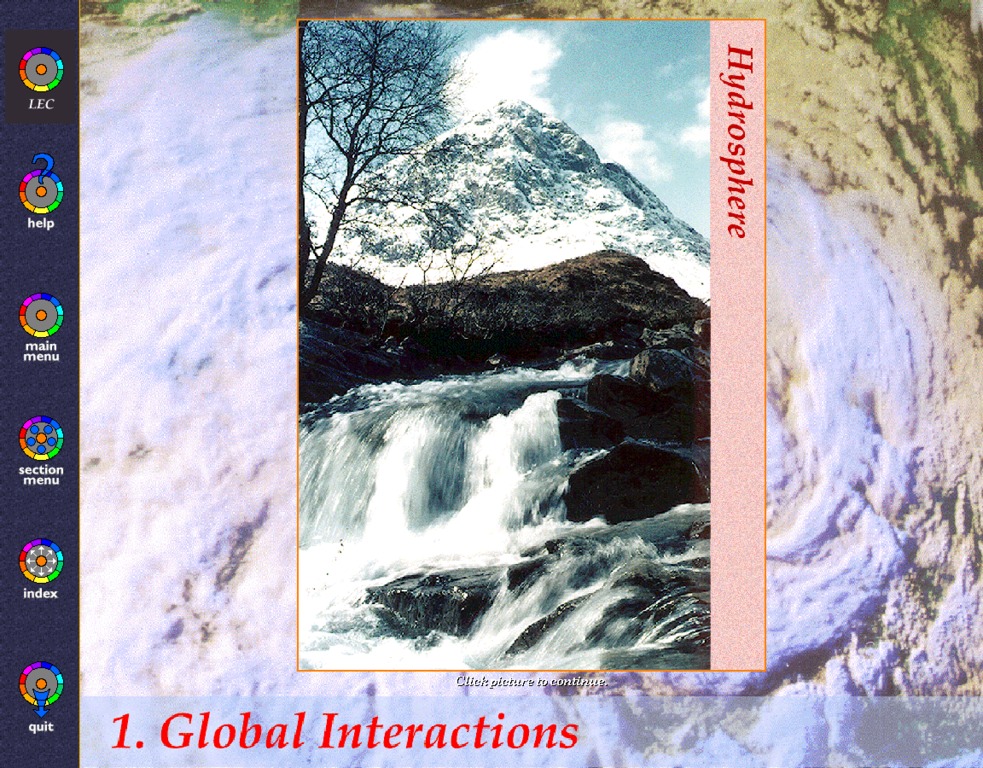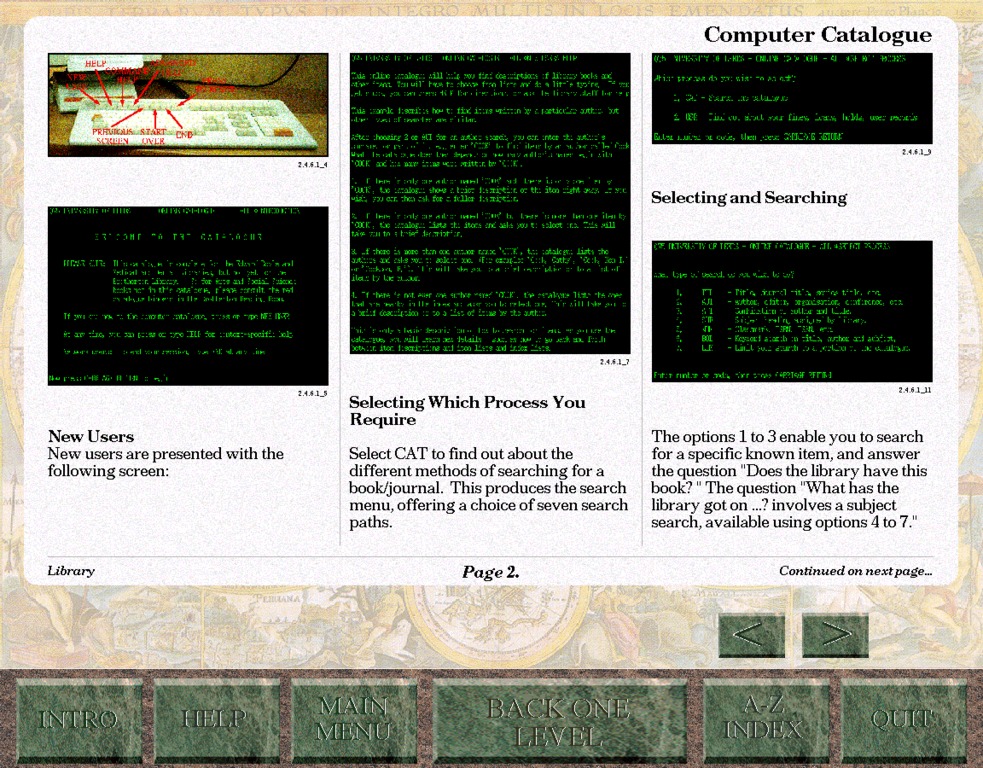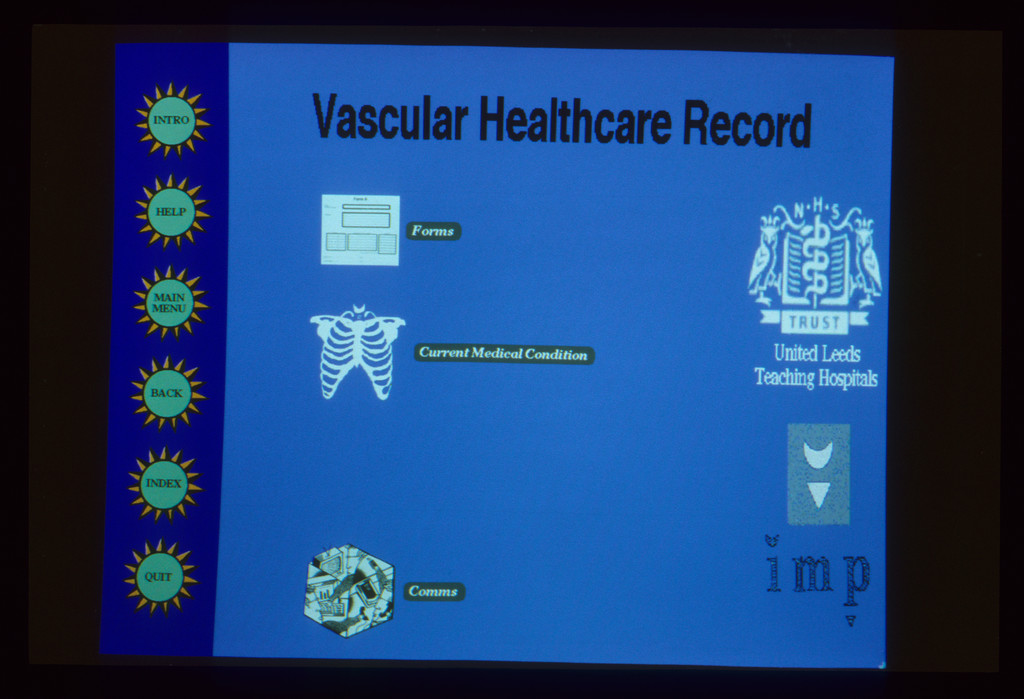‘GARDEN’ – stands for: General Architecture – for the Realisation – of a Development Environment
GARDEN was the fourth tool in the Evolutionary Series: The HNS Browser (1987), The GPE (1989/90), Media Language (1991). It was built as a general purpose tool to enable users to build, manage and access applications within an enabling framework (i) authoring of content (by multiple authors), (ii) access to and display of multimedia – text and images, including “hypertext” (iii) access on a LAN Local Area Network to multiple users – simultaneously and to different parts of a large, structured, information/knowledge resource (iv) management of such a large multi-user application, distributed across a university campus (v) scaling and evolution of a large, structured, information/knowledge resource and learning/teaching application. GARDEN “end users” were content authors, content readers and computer network managers. The GPE modelling – focused on Rectangles; Media Language modelling – focused on Chunks; GARDEN modelling – focused on Pages.
Following the development and testing of The GPE and Media Language tools – a variety of lessons were learnt about the design and construction of object-oriented classes and the end user needs and requirements e.g. (i) for the building of courseware, involving multiple authors, (ii) to be distributed on the university campus network and (iii) needing to be managed with minimum overhead.
Purpose
GARDEN was designed to simply and standardise the author’s task (their purpose) and the network, application, manager’s task (their purpose). Our goal was to enable: to build a tool which was not so sophisticated and complex that it would prove to be beyond many users (authors and courseware builders), and not with a significant learning and usability overhead that would make it effectively unusable, except by few dedicated technicians.
There are three GARDEN projects listed and with screen shots below.
- The EFC Browser – The Environment Foundations Course Browser.
The University of Leeds funded a new Environment Centre with a Professor and a secretary. Upon opening, the new LEC, with no teaching staff, nevertheless planned to deliver a campus wide computer-based course on The Environment. GARDEN was developed (in less than 12 months!) as a tool to deliver this course – a multiuser campus wide interactive learning resource. Screens from The EFC Browser include: the Opening Home Screen Topic Browser and Topic Contents Screens and a selection of Content Pages. - The ACCESS Browser – The University of Leeds Library Concept Demonstrator (the modelling of access to library resources)
‘The ACCESS Browser’ was funded by the University Librarian, Reg Carr, as a Concept Demonstrator of the notion of modelling a framework for University Library and its resources and the notion of visual interfaces for access to library resources through the medium of the GUI, an interactive computer display. ‘ACCESS’ was conceptually generically : hypermedia access to library resources. - The Multimedia Patient Record – (an open systems graphical hypermedia user interface and framework for clinicians and patient data)
A number of alternative concept demonstrators of the ‘Distributed Multimedia Healthcare Record’ were developed; based on a notion of a ‘framework tool’ for the medical practitioner for access to institutions and data resources and for inclusion of the patient record – including a number of standard generic modules e.g. an ID module, a communications module, patient record modules for clinical history, notes, diagnostic test results and images and access to institutional databases, a utilities module. The idea was that a medical practitioner would log in with the ‘framework tool’ (e.g. situated on a ‘smart card’) and proceed (e.g. review current patient lists and their medical records; communicate with their team or other practitioners etc). We developed a Concept Demonstrator : ‘The Vascular Unit Information System’ and ‘Vascular Healthcare Record’ for Mr Andrew Mavor Consultant Vascular Surgeon and his team at The General Infirmary at Leeds.


The first two screens show the Main Menu of the ’EFC’ Environment Centre Foundations Course.
Users logged on and were assigned Unique User Identifier Log File – and a record was compiled of their interaction and progress. The GUI presented the User – at the beginning – with a “planet” orbiting the Sun and thereafter orbiting the Topic that was assigned to them in the sequence of access. The User Log File could be set to an individual sequence. Where a Topic was made available to a User – it would illuminate when selected.


The Screen above is Main Menu Screen (e.g. Topics/Sections) and this following screen is Sub Menu Screen (where each Topic has a number of sections; here Tutorial Sections for a new user).
GARDEN was designed and implemented as a framework (a generic, re-usable framework) for a ‘multimedia application’ composed of a Main Menu/Home Page/’Index Page’ with the top level elements (e.g. Chapters) and a SubMain Menu with the constituent elements of e.g. Chapters. Below, are screen shots from Library ‘Access’ project – where GARDEN Main Menu Page has a number of top level elements (where these are marble buttons) c.f. EFC where GARDEN main Menu Page has these top level elements as the Sun and Planets and with frameworks buttons organised as a strip on the left side of the page and where in ‘Access’ these buttons are organised as a strip on the bottom of the page.
Thus GARDEN provided a framework which could very easily be adapted, re-used and re-purposed in a simple mark up file – and the main Menus appearance could be customised and individualised.

Each Topic could have a List of SubTopics; again, the sequence could be individualised


PAGES were displayed from a simple hypertext mark up language
This was devised and employed more or less before the HTML standard was published.
Text and images could be displayed. A generic mechanism was devised for the display of images where the content of the image need not be known and where the image could be selected and then individually displayed where required by the user

There was – as always – a Browsable Index of Domain Elements : here in the EFC Domain


GARDEN was used to construct a number of applications here: ’ACCESS’ – for the University Library.
The GARDEN GUI Tool provided for the creation of GUIS with Main Menu & SubMenu (Topic/SubTopic) arrangements – essentially a simple display mark up which could be used by non programmers





The following screens are from ‘VUIS’. GARDEN was used to construct ’VUIS’ for the Department of Vascular Surgery at the Leeds General Infirmary – as a ‘concept demonstrator’ of the Multimedia Healthcare Record



The Multimedia Healthcare Record was one in a series of bandwagons in the mid-1990’s : The Multimedia Bandwagon – where a rash of ‘Multimedia’ companies opened their doors; where the brochures were impressive and the promise (of multimedia software) was exciting BUT as a colleague of mine told me : “You go with your credit card and ask the Multimedia Consultancy to swipe your card (price no object) and put the software in a box” = his card was never swiped; no software!
Where there was The Multimedia Healthcare Record Bandwagon – lots of MS Windows-based mock-ups BUT it just didnt happen. Where we prototyped the Multimedia Healthcare Record in consultation with real working clinicians (!) – based on a generic design (including a number of generic modules : Communications Module; Diagnostic Tests Module; Medical Images Module; ETC). Where we used GARDEN as the general purpose application building tool – where the Healthcare Record had a Main Screen Top Level (with few modules) and each module was a type of Topic with a breakdown of its components – each selectable etc
Where this Healthcare Record was : UNIX/X11 Windows/TCP-IP – distributable on a heterogenous network.

Two alternative design simulations for the Vascular Healthcare Record were designed and tested with end users: ‘The White Queen’ and ‘The Red Queen’.

